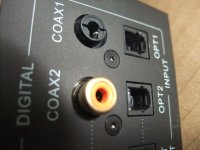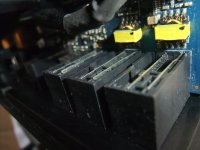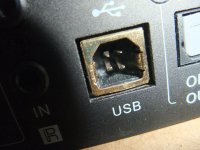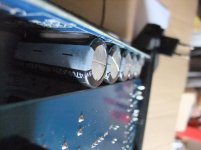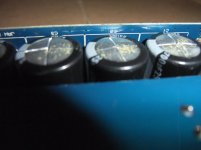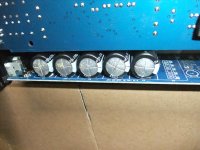Bad Caps in Audiolab's M-DAC
I receive this D/A converter from a friend because of very unpleasant odor development and because of increasingly poor sound quality.
After strip down the reason was clear.
Same as showed and described here:
Ask Hackaday: Experiences With Capacitor Failure | Hackaday
DFI Lanparty nF4 Ultra-D - Badcaps Forums
In the attachment are images from a device in unused condition where caps looks god.
Next time I will upload images from the here mentioned device with the same cap versions inside, that have partly exploded.
The 470uF/6,3V types are mainly affected (brand name "Lelov") - go to the image number 7.
Is this a known issue on this model or are there only any few devices with this issue ?
Thanks for an advice.
Service Manual is here:
http://www.hifi-studio.cz/pdf/Audiolab/M-DAC/M-DAC Service Manual_ 20120710.pdf
I receive this D/A converter from a friend because of very unpleasant odor development and because of increasingly poor sound quality.
After strip down the reason was clear.
Same as showed and described here:
Ask Hackaday: Experiences With Capacitor Failure | Hackaday
DFI Lanparty nF4 Ultra-D - Badcaps Forums
In the attachment are images from a device in unused condition where caps looks god.
Next time I will upload images from the here mentioned device with the same cap versions inside, that have partly exploded.
The 470uF/6,3V types are mainly affected (brand name "Lelov") - go to the image number 7.
Is this a known issue on this model or are there only any few devices with this issue ?
Thanks for an advice.
Service Manual is here:
http://www.hifi-studio.cz/pdf/Audiolab/M-DAC/M-DAC Service Manual_ 20120710.pdf
Attachments
-
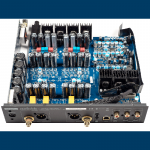 AudiolabMDACDACfejhallgatoerosito4.png235.1 KB · Views: 800
AudiolabMDACDACfejhallgatoerosito4.png235.1 KB · Views: 800 -
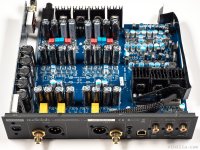 M1II_180903_011.jpg486.5 KB · Views: 760
M1II_180903_011.jpg486.5 KB · Views: 760 -
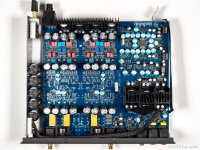 M1II_180903_008.jpg1 MB · Views: 1,013
M1II_180903_008.jpg1 MB · Views: 1,013 -
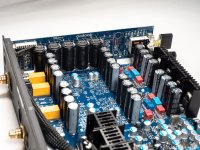 M1II_180903_013-1024x768.jpg209.9 KB · Views: 876
M1II_180903_013-1024x768.jpg209.9 KB · Views: 876 -
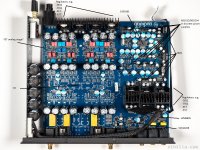 M1II_180903_008-2.jpg508.6 KB · Views: 699
M1II_180903_008-2.jpg508.6 KB · Views: 699 -
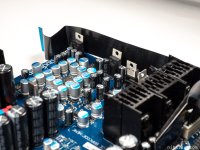 M1II_180903_014.jpg322.2 KB · Views: 443
M1II_180903_014.jpg322.2 KB · Views: 443 -
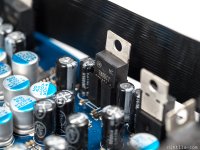 M1II_180903_025.jpg295.9 KB · Views: 416
M1II_180903_025.jpg295.9 KB · Views: 416 -
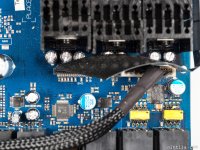 M1II_180903_020.jpg985.9 KB · Views: 428
M1II_180903_020.jpg985.9 KB · Views: 428 -
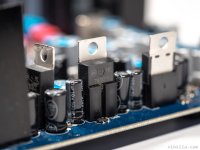 M1II_180903_027.jpg217.6 KB · Views: 435
M1II_180903_027.jpg217.6 KB · Views: 435 -
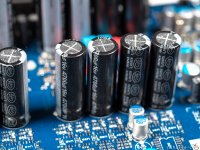 M1II_180903_029.jpg378.3 KB · Views: 472
M1II_180903_029.jpg378.3 KB · Views: 472
Last edited:
more pics from inside
Attachments
-
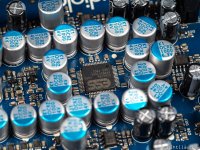 M1II_180903_032.jpg517.7 KB · Views: 459
M1II_180903_032.jpg517.7 KB · Views: 459 -
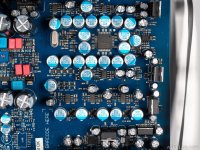 M1II_180903_035.jpg1 MB · Views: 332
M1II_180903_035.jpg1 MB · Views: 332 -
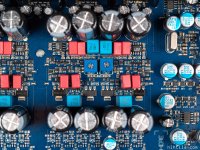 M1II_180903_045.jpg1 MB · Views: 438
M1II_180903_045.jpg1 MB · Views: 438 -
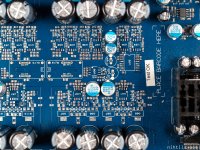 M1II_180903_043.jpg643.7 KB · Views: 321
M1II_180903_043.jpg643.7 KB · Views: 321 -
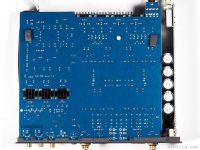 M1II_180903_053.jpg420.9 KB · Views: 272
M1II_180903_053.jpg420.9 KB · Views: 272 -
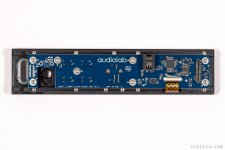 M1II_180903_056.jpg194.8 KB · Views: 236
M1II_180903_056.jpg194.8 KB · Views: 236 -
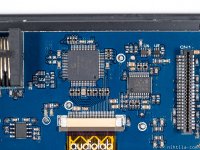 M1II_180903_059.jpg550.7 KB · Views: 273
M1II_180903_059.jpg550.7 KB · Views: 273 -
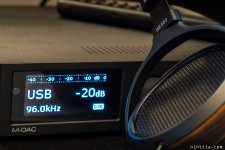 M1II_180906_001.jpg261.8 KB · Views: 287
M1II_180906_001.jpg261.8 KB · Views: 287
I'm very interested in buying an Audiolab M-DAC.
I can find many foto's from the oustide.
But does someone have a foto of the inside or the PCP?
Thanks very much,
Willem
They will all have bad capacitors now - unless they have been recapped. Ironicaly its the Black 105deg Low ESR types (which are more expensive then standard Genral purpose caps) that fail.
It also seems in this case, that the lower the voltage the caps are operated at the HIGHER the faliure rate - with the Caps on the 1.2V rails that start to fail first.
It seems the capacitor manufacturer was victum to fake electroylite - (ironic as these Low ESR 105 deg parts where x4 to x5 as expensive as standard general purpose caps)..
The Capacitor issue is ONLY a problem with the standard black pastic sleeved eletrolytic capacitors, after maybe millions of capacitors used, I've never seen a bad Orgainc capacitor (the silver bare metal capacitors with light blue prining on the top of the cap case - these are VERY good caps).
Every product has its "Stock faults" - known issues with the MDAC:-
1. Capacitors leaking (Seemed to be a period of bad production batches of capacitors)
2. Bad Mute Relays (intermittetent channel loss on power cycle)
3. Crystal going high ESR resulting in no Master Clock (Comms Error message on power-up (typically when cold)).
4. Broken USB socket (Center section snapped off).
Otherwise no show stoppers as long as you can recap the board - its a 4 layer PCB with heavy Ground plane so its very hard to rework.. you need a decent desoldering station, a Micky Mouse hand operated solder sucker will not work here...
Last edited:
A closer look showed, that following capacitors have inflated resp. burst open (also in two other devices of this model):
1) 470µF / 6.3V (C44,46,47,50,52,54,55,60,62,71-73, 85, 86, 89 and 90 - quickly in the PDF schematic not recognizable whether filter capacitors or not)
2) 4.700µF / 25V (C1-5, clearly filter capacitors)
Why just this one and not those, which are close to the heat sinks (thermal stress) ?
P.S.: there is another thread concerning Audiolab's M-DAC:
Audiolab M-DAC main board, hiss on left channel
1) 470µF / 6.3V (C44,46,47,50,52,54,55,60,62,71-73, 85, 86, 89 and 90 - quickly in the PDF schematic not recognizable whether filter capacitors or not)
2) 4.700µF / 25V (C1-5, clearly filter capacitors)
Why just this one and not those, which are close to the heat sinks (thermal stress) ?
P.S.: there is another thread concerning Audiolab's M-DAC:
Audiolab M-DAC main board, hiss on left channel
Lelon (not Lelov) electrolytic capacitors are famous for unreliability.... Now not anymore but they used to fail after a short while. The brand got famous in the "bad cap" period and was produced under various names all suffering from cooking electrolyte. I am afraid they will ALL have to be replaced. Just like tantalum got a bad reputation from its past Lelon now suffers from the very bad past. Still the current ones are of normal/good quality.
Regardless of a known brand name of a device and audiophile looks (and supposedly superior quality) it is dependent on the quality of the capacitors. I have seen expensive devices all failing from using cheap bad caps and no name stuff with cheap but OK caps still working today Useless info to audiophiles as they keep buying stuff based on looks and name. It is clear to me that audiophile stuff, although being more expensive, needs replacement sooner than mass produced stuff.
Useless info to audiophiles as they keep buying stuff based on looks and name. It is clear to me that audiophile stuff, although being more expensive, needs replacement sooner than mass produced stuff.
Lelon Electronics Corp.
Regardless of a known brand name of a device and audiophile looks (and supposedly superior quality) it is dependent on the quality of the capacitors. I have seen expensive devices all failing from using cheap bad caps and no name stuff with cheap but OK caps still working today
Lelon Electronics Corp.
Last edited:
Are these cap problems to limited to certain production dates (if the reason was a faulty cap production)?
What is a good replacement? E. g. Panasonic FC or FM or any other low ESR cap from a high quality manufacturer?
Last time I looked under the bonnet my M-Dac was OK, but it's been a while.
Always thought about a cap upgrade but John's comments about the de-soldering challenges put me off.
Thx
Joe
What is a good replacement? E. g. Panasonic FC or FM or any other low ESR cap from a high quality manufacturer?
Last time I looked under the bonnet my M-Dac was OK, but it's been a while.
Always thought about a cap upgrade but John's comments about the de-soldering challenges put me off.
Thx
Joe
It is not an upgrade but sheer necessity as they will fail without question. If you wait for them to fail you might run into higher costs than replacing them before the POS device with fancy looks/name fails. On the path to failure the device will produce less optimal results and it will use more energy than necessary as the caps will start to cook internally. Compare it to how long you can drive your car with oil level below minimum.
Although Lelon is good today I got to distrust them and always replace them wherever I see them (sorry, Lelon!). Only in devices younger than 2018 I leave them where they are. No technical explanation but I have just seen too many Lelon capacitors bulging and eating away PCB tracks and simply set a safe limit. Same counts for Capxon and such crappy brands.
As usual you can not go wrong with Panasonic FC/FM with a slight preference for FC. You do need a good desoldering tool. I had a Den-on 7000 for such jobs but it is defective unfortunately. It is not easy to replace them and it is not cheap either which goes to show a simple DAC with as least electrolytic caps as possible will pose less problems and less costs to its owner from start to EOL
Although Lelon is good today I got to distrust them and always replace them wherever I see them (sorry, Lelon!). Only in devices younger than 2018 I leave them where they are. No technical explanation but I have just seen too many Lelon capacitors bulging and eating away PCB tracks and simply set a safe limit. Same counts for Capxon and such crappy brands.
As usual you can not go wrong with Panasonic FC/FM with a slight preference for FC. You do need a good desoldering tool. I had a Den-on 7000 for such jobs but it is defective unfortunately. It is not easy to replace them and it is not cheap either which goes to show a simple DAC with as least electrolytic caps as possible will pose less problems and less costs to its owner from start to EOL
Last edited:
It may help to pre-heat the whole board to make heat-sinking effect of the ground plane reduced. Obviously, best to practice with a test board to get the technique down first.
Also, with two solder irons and two people, it may be possible in some cases to heat the board from both sides. That may require destroying an electrolytic from the top to get access to the PCB surface.
Also, with two solder irons and two people, it may be possible in some cases to heat the board from both sides. That may require destroying an electrolytic from the top to get access to the PCB surface.
Last edited:
The Den-on 7000 desoldering tool costs almost as much as a new (M-) Dac...
I paid way less in an auction. Thankfully the Den-on can be used to repair more than 1 crappy device so you can repair the stuff that fails instead of having to pay for parts and labour of a good repair guy
A rule of thumb is that when the device is chock full of electrolytic caps you can almost be sure the cheapest brands/types are used. If you combine this knowledge with the first mentioned knowledge you would never have bought the M-DAC. After the first investment a second one will add up when it fails. This results in a low ROI either when sold defective or when having it repaired.
According the designer there are a few points of attention which could be kept in mind or printed out. Maybe they could be done without hesitation to avoid more trouble. Takamisawa new old stock relays are not expensive at all. IMHO point 1 and 2 should be done anyway to enjoy a well performing device.
1. Capacitors leaking (Seemed to be a period of bad production batches of capacitors)
2. Bad Mute Relays (intermittent channel loss on power cycle)
3. Crystal going high ESR resulting in no Master Clock (Comms Error message on power-up (typically when cold)).
4. Broken USB socket (Center section snapped off).
Last edited:
Yes, and that reminds me of a supposedly high-quality ELNA series with gold lettering, used e. g. in the Kenwood CD-Player DP-7030 and DP-5030 (extremely troublesome repair service because of the need to unsolder and re-solder numerous additional components for cleaning so as that the copper surfaces of the conductor tracks were very laborious to grind and tin-plate).Lelon (not Lelov) electrolytic capacitors are famous for unreliability.... Now not anymore but they used to fail after a short while. The brand got famous in the "bad cap" period and was produced under various names all suffering from cooking electrolyte. I am afraid they will ALL have to be replaced. Just like tantalum got a bad reputation from its past Lelon now suffers from the very bad past. Still the current ones are of normal/good quality.
Regardless of a known brand name of a device and audiophile looks (and supposedly superior quality) it is dependent on the quality of the capacitors. I have seen expensive devices all failing from using cheap bad caps and no name stuff with cheap but OK caps still working todayUseless info to audiophiles as they keep buying stuff based on looks and name. It is clear to me that audiophile stuff, although being more expensive, needs replacement sooner than mass produced stuff.
Lelon Electronics Corp.
Images of the conditions before start repair service are to find here:
Klassiker-Service - DP-7030
An example from many others.
BTW - thank you for your informative comments.
Are there listings anywhere to find, which brands and models for audio components suffer under this issue ? Would be very helpful before making a purchase decision of audio components in used condition.
Last edited:
now the associated images - inflated caps unfortunately not really easy to see on the photos.A closer look showed, that following capacitors have inflated resp. burst open (also in two other devices of this model):
1) 470µF / 6.3V (C44,46,47,50,52,54,55,60,62,71-73, 85, 86, 89 and 90 - quickly in the PDF schematic not recognizable whether filter capacitors or not)
2) 4.700µF / 25V (C1-5, clearly filter capacitors)
Why just this one and not those, which are close to the heat sinks (thermal stress) ?
P.S.: there is another thread concerning Audiolab's M-DAC:
Audiolab M-DAC main board, hiss on left channel
Attachments
-
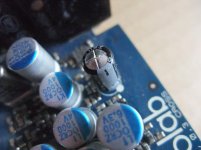 DSCF7576.jpg989.5 KB · Views: 346
DSCF7576.jpg989.5 KB · Views: 346 -
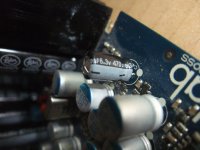 DSCF7575.jpg982.1 KB · Views: 347
DSCF7575.jpg982.1 KB · Views: 347 -
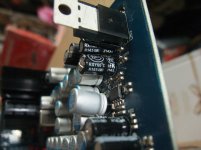 DSCF7573.jpg981.5 KB · Views: 312
DSCF7573.jpg981.5 KB · Views: 312 -
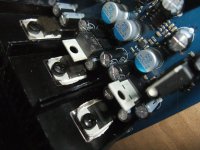 DSCF7565.jpg990.3 KB · Views: 350
DSCF7565.jpg990.3 KB · Views: 350 -
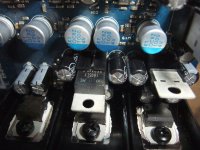 DSCF7557.jpg996.8 KB · Views: 218
DSCF7557.jpg996.8 KB · Views: 218 -
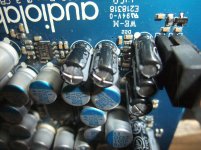 DSCF7567.jpg998.5 KB · Views: 421
DSCF7567.jpg998.5 KB · Views: 421 -
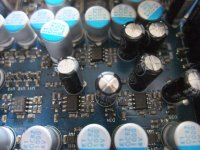 DSCF7554.jpg1,007.7 KB · Views: 199
DSCF7554.jpg1,007.7 KB · Views: 199 -
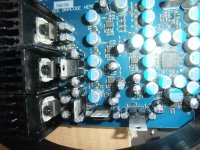 DSCF7553.jpg1 MB · Views: 240
DSCF7553.jpg1 MB · Views: 240 -
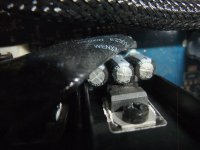 DSCF7551.jpg987.1 KB · Views: 213
DSCF7551.jpg987.1 KB · Views: 213 -
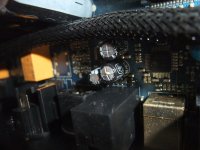 DSCF7549.jpg990.9 KB · Views: 215
DSCF7549.jpg990.9 KB · Views: 215
Last edited:
Sorry for the off-topic. Just in case JohnW sees this --
@JohnW -- tried to send you a PM but your inbox is full.
--From a former DB resident
Always really great to meet a former "Delivery Bay" Resident
I just cleared out a few PM in my inbox... but it fills up quick...
Hi John,
From looking at the first set of pics above, I figured it was one of your designs.
How are you doing? Any progress on the DSD dac you were working on for so long? Tried BD34301EKV yet?
Inquiring minds want to know
Hi Mark,
Been working non stop on the design... PCB's arrived about a month ago and I dived into the Clock section which is always the hardest...
The worldwide semiconductor situation is causing so many issues - the AKM situation has been made x100 worst... so I had to work on an FPGA based replacement for AKM parts, only to find that the FPGA leadtimes are 52 weeks +... Now I have the Verilog code I can use almost any suitable sized FPGA - but its a bit like "Whack a Mole" change to a new FPGA family and it too goes to 52 week leadtimes...
XMOS the same... 52+ weeks...
Also, turns out that the NDK VC-TCXO I used in the reference clock (not audio clocks) used Die manufactured by AKM so now there's also a worldwide shortage of VC-TCXO's...
Anyway - just wrapping up the testing of the Audio clock section on the Beta PCB, its phase noise is better then my reference clock so I either need to build an identical second unit (which I might do once I re-spin the PCB with corrections) - or find someone with one of andrea_mori's 90/89MHz clocks I can use a comparative reference - my clock design uses Q enhancement + feedback to reduce the close-in Phase noise... so it will be good to compare my clock design against something "decent"...
My next task on the Beta PCB is to build and test the discrete Regulator section for the DAC array (which will be way easier then the clock section) - then I can finally test the DAC array + get back to working on the FPGA code.
I've taken a detour on the DAC array design and rather then using a 1Bit PDM array I was originally working with - I had the crazy idea of using 32x 16bit DAC's per DAC array (at x16 FS) - so the FPGA modulator now has crazy "element" resolution to "work with"... this allows a very simple low order (even first order) modulator to achieve decent resolution - subjectively, I find that lower order modulators reproduce transient details better.
Last edited:
- Home
- Source & Line
- Digital Line Level
- Audiolab M-DAC Inside/PCB
